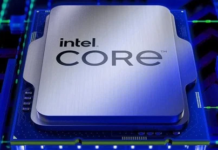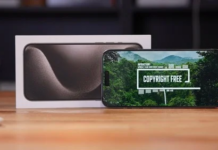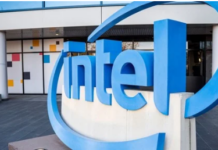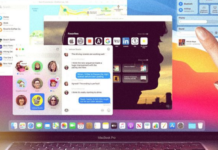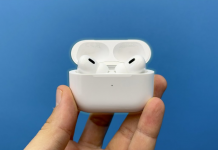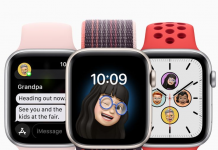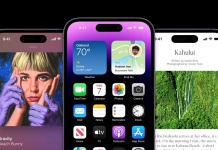When we look at screen technologies, we often confuse the words “definition” with “resolution.” Yet these two overused terms have many differences. This small folder explains what characterizes each concept and will help you, incidentally, to shine in society.
The place of new technologies in our daily lives sometimes forces us to acquire new technical knowledge. It’s hard to find a way in the middle of brand marketing terms. As for screens (smartphones, tablets, TV), manufacturers are regularly seen using the terms “definition” and “resolution” to highlight the quality of their hardware.
Don’t you know the difference between the two? Don’t worry, the builders themselves sometimes confuse the two terms. To make matters worse, the presentation conferences are held in English. However, in the language of Shakespeare, both concepts translate to “resolution.”
While some are increasingly using the formulas “display resolution” (definition) and “pixel density” (resolution) to separate the two concepts, it is difficult for the consumer to distinguish them well. To get a clearer picture, we have prepared a small explanatory dossier that, we promise, will not tie your brain knot.
summary
- Definition: the number of pixels
- Resolution: Pixel density
- What does the human eye perceive?
- feedback
Definition: the number of pixels
What do HD, Full HD, QHD and 4K have in common? Good question, we thank you for asking it. All these terms speak of one and the same thing: the screen definition. The definition is the number of pixels in a slab. To know the definition of a screen, we multiply the number of pixels arranged on a width by the number of pixels placed on the height. Thanks to this clever calculation, one obtains the definition of the screen.
For example, a 16:9 QHD slab is 2560 pixels wide and 1,440 pixels high for a total of 3,686,400 pixels. A 4K slab has 8,294,400 pixels (3840 x 2160 pixels).
Manufacturers have recently communicated full HD or QHD definitions. This small “O” appeared as smartphones gradually incorporated new screen formats (18:9, 19.5:9, 20:9, 16:10). For these particular cases, the number of pixels present on width and height change.
For example, an 18:9 QHD screen is 2880 pixels wide and 1,440 pixels high. If you’re lost, remember that a QHD definition has 1.6 times more pixels than a Full HD definition,the 4K/UHD four times as much. To get a clearer picture, we’ve put together a little summary table.
Beware of energy consumption!
A beautiful screen is good, yet it must be able to feed it. You may have noticed that smartphones with QHD screens have the latest processor and GPU.
This is simply due to the need for resources of these slabs. The higher the definition, the more power and energy the screen needs. For example, a QHD slab requires 1.5 times more power than a Full HD slab. And we’re only talking about a screen with a refresh rate of 60 Hz. The 90 Hz and 120 Hz screens are even more gourmet.
Manufacturers must then optimize all of these parameters while maintaining adequate autonomy. To design its Galaxy S20 Samsung has chosen to limit the refresh rate of 120 Hz to a Full HD definition. Combining QHD and 120 Hz would have had a significant impact on the already average range.
Resolution: Pixel density
Resolution is the ratio between the definition of the slab (number of pixels) and its size (in inches). In France, it is expressed in pixels per point (PPP), English speakers speak of pixels per inch (literally pixels per inch). The higher the result of this report, the better the resolution.
Credits: Pixelvalley
You can have fun using your calculator to calculate the resolution. But you may get annoyed with the conversion game. You are therefore recommended to use free, more convenient online tools, such as PPI Calculator. Enter the definition, the size of the screen and you will get the resolution.
For example, we compared the resolution of a 6.9-inch smartphone and a 12.9-inch tablet, both with a QHD definition (2560 x 1440 pixels). We got a resolution of 425 ppp for the smartphone and 227 ppp for the tablet.
What do these scores mean? Simply that for the same definition the smartphone screen is more comfortable than that of the tablet. Because pixel density is lower, the human eye can more easily distinguish them. This difference is particularly noticeable in texts or games. This is not to say that the race for the best resolution makes sense. Because the human eye also has its limits.
What does the human eye perceive?
Contrary to what one might think, the human eye no longer knows the difference between two resolutions from a certain threshold. Apple, whose Retina technology sets the resolution at 300 ppp, believes that the human eye can no longer see pixels beyond this limit. In reality, it’s not all that simple.
Credits: Unsplash / Amanda Dalbjarn
It all depends on the view of each user and the distance they see their screen. Experts estimate that a correct resolution is between 300 and 400 ppp,well below the screens of some smartphones, not just the most high-end. Below 300 ppp, an average user is able to distinguish pixels by getting closer to the screen. Crossing the 400 ppp mark is useless since the screen will be more resource-intensive and energy-intensive without providing more comfort.
However, there are two exceptions. Some superheroes are able to distinguish pixels up to 600 ppp by sticking the eye to the screen, without using a magnifying glass. Above all, virtual reality enthusiasts will see the pixels,the lens of their headset magnifying the image. But these cases do not really reflect the use of the general public.
Now you know the difference between definition and screen resolution. Not only will you no longer be able to be destabilized by marketing discourse, but you will also be able to shine at the next family dinner.




